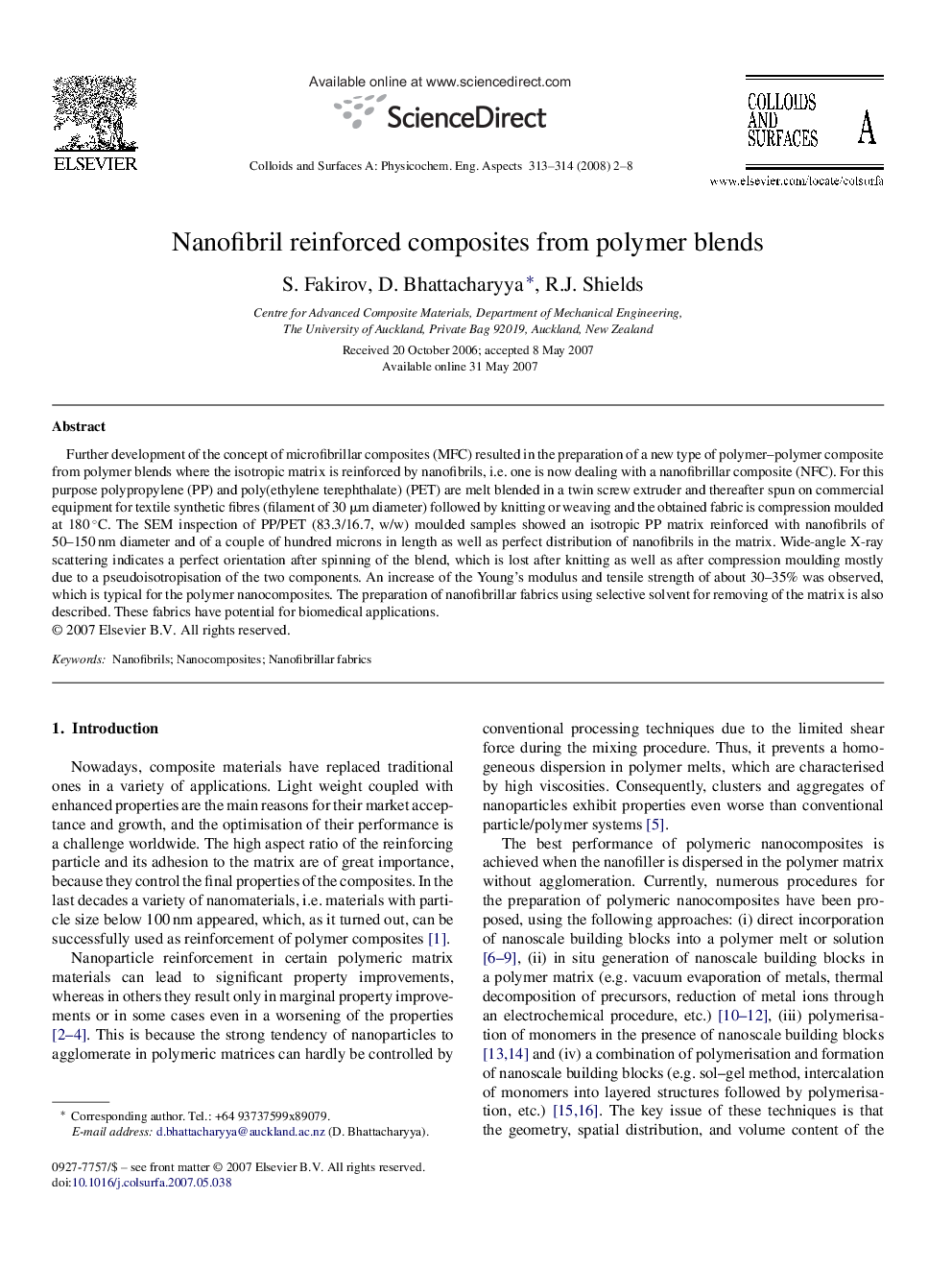| Article ID | Journal | Published Year | Pages | File Type |
|---|---|---|---|---|
| 596918 | Colloids and Surfaces A: Physicochemical and Engineering Aspects | 2008 | 7 Pages |
Further development of the concept of microfibrillar composites (MFC) resulted in the preparation of a new type of polymer–polymer composite from polymer blends where the isotropic matrix is reinforced by nanofibrils, i.e. one is now dealing with a nanofibrillar composite (NFC). For this purpose polypropylene (PP) and poly(ethylene terephthalate) (PET) are melt blended in a twin screw extruder and thereafter spun on commercial equipment for textile synthetic fibres (filament of 30 μm diameter) followed by knitting or weaving and the obtained fabric is compression moulded at 180 °C. The SEM inspection of PP/PET (83.3/16.7, w/w) moulded samples showed an isotropic PP matrix reinforced with nanofibrils of 50–150 nm diameter and of a couple of hundred microns in length as well as perfect distribution of nanofibrils in the matrix. Wide-angle X-ray scattering indicates a perfect orientation after spinning of the blend, which is lost after knitting as well as after compression moulding mostly due to a pseudoisotropisation of the two components. An increase of the Young's modulus and tensile strength of about 30–35% was observed, which is typical for the polymer nanocomposites. The preparation of nanofibrillar fabrics using selective solvent for removing of the matrix is also described. These fabrics have potential for biomedical applications.
